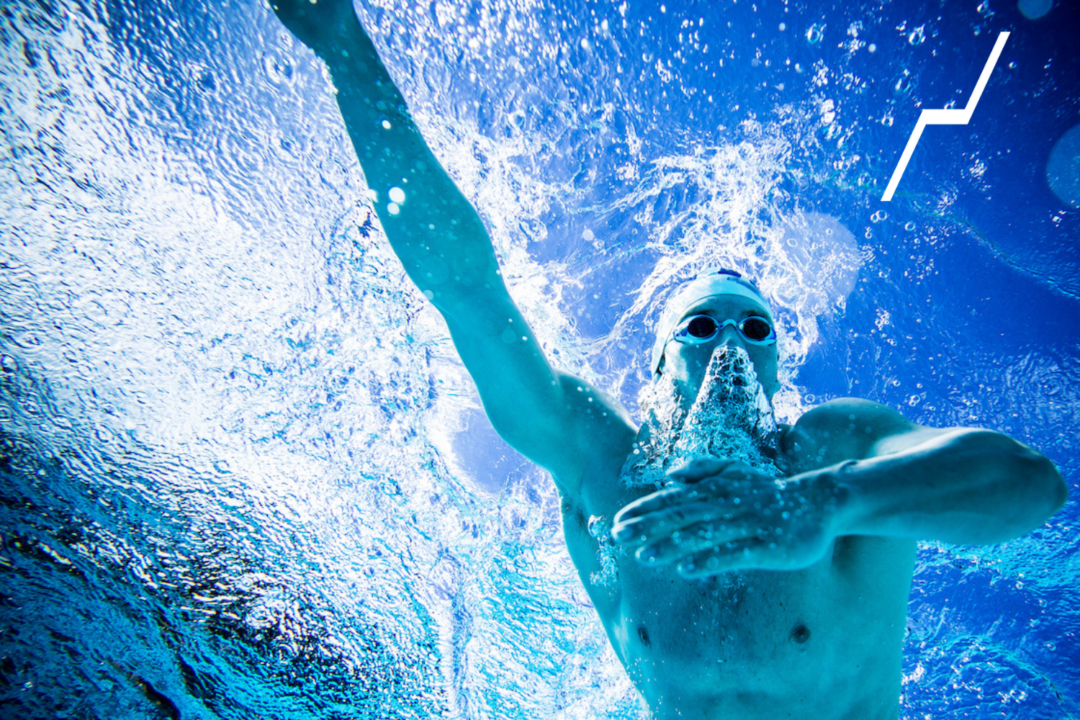One of the most frequent questions we get on our SURGE Strength Dryland Programs is how to tailor dryland to match a swimmer’s best stroke in the pool. We hear repeatedly that coaches want a separate program for their breaststrokers, butterfliers, freestylers, and backstrokers. The truth is that’s not necessary. All 4 strokes are made up of the same underlying, fundamental movements. We train these movements in different ways during dryland than we do in the pool and therefore get the most out of our dryland training when we focus on them. This also allows us to keep groups together and coaches attention focused on giving individual feedback rather than running between 4 groups doing different workouts. Instead of splitting up dryland by stroke, let’s focus on the fundamental movements found in all four strokes:
Strong Catch
All strokes need a strong catch. You can train this on land through progressive upper-body strength training, which is divided into two types of upper-body exercises: pushes and pulls. You should be thinking about these movements being trained in two different directions. We perform these movements vertically (think pull-ups and shoulder presses), and horizontally (think push-ups and rows). Vertical movements specifically train the catch while horizontal movements address shoulder stability and posture. Both are crucial to performance in any stroke, but we oftentimes see programs missing the connection between vertical strength training and having a catch that can catapult a swimmer over their body in the water. If we only train the swimmer in the same plane (horizontally) as their specialty stroke, they are missing out on the benefits that come from other types of well-rounded training.
Shoulder Mobility
Swimming is an overhead sport. It requires adequate shoulder mobility. Without it, athletes are likely to get overworked and therefore injured. This is why shoulder mobility must be addressed across the entire team, regardless of stroke. Shoulder mobility exercises are technical in nature. Therefore, we recommend coaches to guide their swimmers through them with an emphasis on individualized coaching and safety of the athlete’s shoulders. If you split off into groups for dryland (based on stroke), you are setting up your session to be disorganized and hard to manage as a coach. More than that, you aren’t gaining much from splitting up your athletes – it’s like splitting hairs. For a simple, go-to shoulder mobility exercises perfect for your whole team.
Strong Kick
Do you find yourself waving your arms, yelling “kick” to your swimmers as they start to lose their legs mid-race? Kicks can make or break an entire swim career and acts as the motor behind every stroke. Dryland is critical to developing strength for the kick. The answer to training the kick on land is using gravity to our advantage. The best way to improve kick is by building strength and power through simple resistance training movements, like hinging and squatting. The hinge and squat are the most efficient way to accomplish this. No matter what stroke the athlete specializes in, they all require the athlete to hinge and squat. Think about the start position or each push off the wall. Basic, power, and strength exercises drive the hips forward in butterfly and breaststroke. They increase the athlete’s torque and rigidity in freestyle and backstroke. Work the lower body as a system. Then, the athlete will have better motor recruitment and coordination for their stroke and a powerful kick to drive them throughout their race.
Ankle Mobility
In order to properly train the lower body and maintain technique in the kick, every swimmer should address ankle mobility. The best swimmers get more out of their kick by pointing their foot and elongating their leg. Water creates a different resistance pattern to the foot than what humans typically experience on land. This makes the musculature around the ankle a key contributor to both the kicks and the push off the wall. Regardless of stroke, teams should prioritize ankle mobility drills in their dryland program.
What about Breaststroke?
Breaststroke can sometimes be considered an outlier among the 4 swim strokes. It looks very different than the other strokes. However, if you take a closer look, muscle-firing recruitment is actually not that different. The difference is in the movement pattern of the hip rotators. To accommodate for this, we can add in a few more lateral, or side-to-side movements. We can also implement more hip mobility. Watch below to see how we sprinkle in internal hip rotation drills for breaststrokers:
When we look at the fundamental, neuromuscular patterns of each stroke, they are essentially the same. Instead of working to separate swimmers based on their best stroke, address the prime movers of the upper and lower body. The swimmer will get faster when placed in the water, regardless of their specialty. The focus of dryland should be placed on building strength and power. It should not attempt to replicate movements performed in water. Swim practice is the place where the strokes become the bulk of your training. In dryland, we concentrate on the main components that exist in each stroke. There may be instances where training should be slightly altered to accommodate stroke, but most of the time, the focus should be on building an ideal swimmer’s body. This makes your swimmers more well-rounded athletes. It also simplifies programming for the coach. The best athletes make the best swimmers.
GET STARTED NOW WITH OUR SURGE STRENGTH PROGRAMS
BECOME SURGE STRENGTH DRYLAND CERTIFIED (SSDC)
BUILD BETTER ATHLETES TO GENERATE FASTER SWIMMERS
Courtesy of SwimSwam’s exclusive dryland training partner, SURGE Strength.
SURGE Strength, a strength training brand created by Chris Ritter, CEO of RITTER Sports Performance, aims to build better athletes and faster swimmers through dryland programs, and coaching education.







